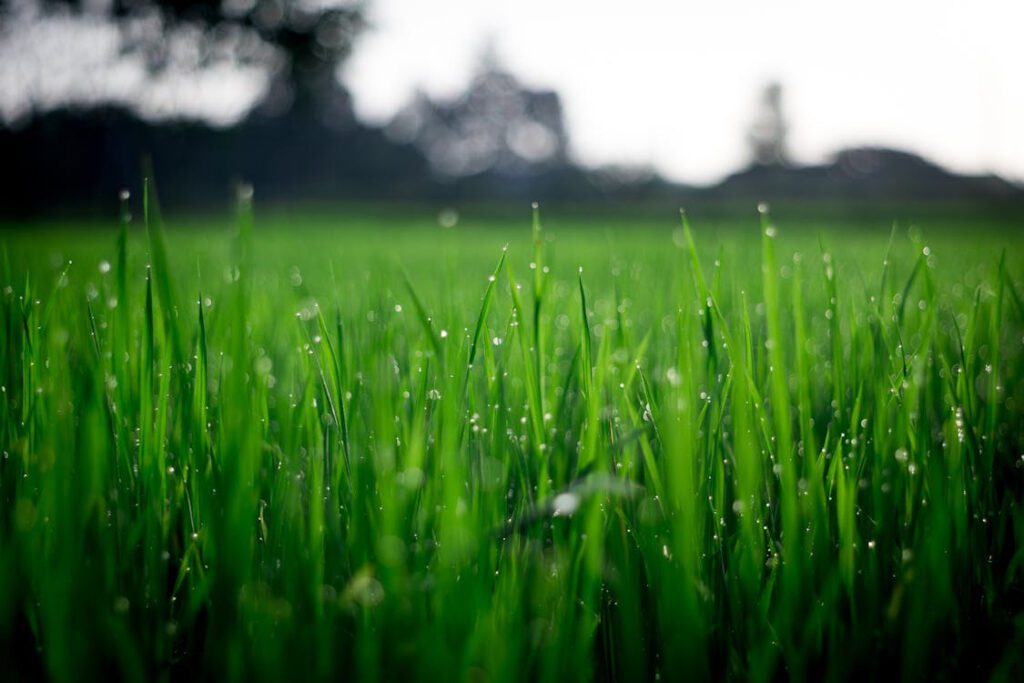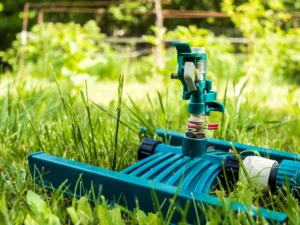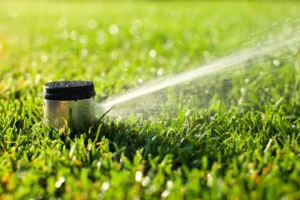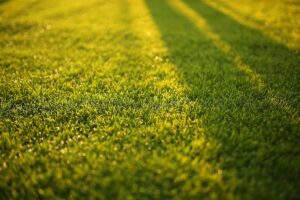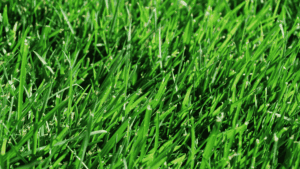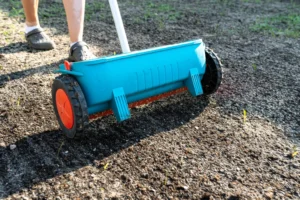If you’re a homeowner in Atlanta, you know how quickly a beautiful lawn can become a patchy mess due to common diseases. Lawn disease is a key concern for Georgia homeowners, as the region’s humid subtropical climate provides ideal conditions for various turf maladies. At WeedPro it’s a common problem that our clients get. In this text, we’ll explore the most prevalent lawn diseases in Georgia, including common fungal disease, and offer practical solutions that will keep your lawn healthy and vibrant all year long.
Understanding Georgia’s Climate and Its Impact on Lawn Health
Georgia’s humid subtropical climate brings hot summers and mild winters, offering perfect conditions for lawn diseases like fungal growth. While warm season grasses like zoysia grass and Augustine grass thrive here, cool season grasses are also present in Georgia and can be affected by certain diseases. With excessive moisture, poor drainage, and thatch buildup, your yard can quickly become susceptible to turf diseases, especially in warm season turfgrass, which is particularly vulnerable to issues like large patch. Understanding the causes will aid you in choosing the right practices to maintain a healthy lawn, keeping your yard picture-perfect, even during the most sweltering months.
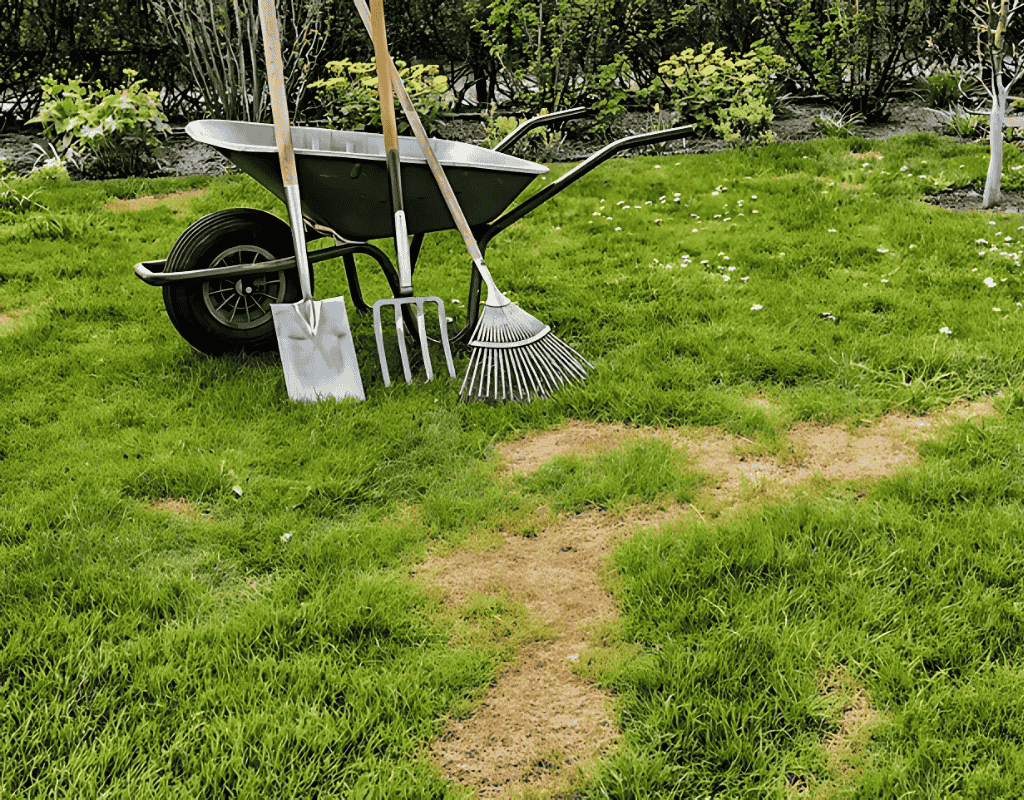
Causes of Lawn Diseases in Georgia
Like we’ve previously stated, lawn diseases in Georgia are driven by a combination of environmental conditions, soil health, and lawn care practices. The state’s warm weather and high humidity create a perfect environment for fungal diseases to thrive, especially in warm season grasses like zoysia grass and Augustine grass. These grasses, while popular for their resilience, are particularly vulnerable to issues such as brown patch and large patch during periods of high humidity and wet weather.
One of the leading contributors to lawn diseases is poor soil quality. Compacted soil and poor drainage can trap moisture around grass roots, encouraging the development of root rot and fairy ring. Additionally, improper soil pH can weaken grass plants, making them more susceptible to various lawn diseases. Regular soil testing is essential to maintain proper soil pH and identify any imbalances before they lead to problems. Adjusting soil pH with acidifying fertilizers when necessary can help create a more favorable environment for healthy grass growth.
Excessive moisture is another major factor in the spread of lawn diseases. Overwatering or prolonged wet weather can leave grass blades damp for extended periods, promoting the growth of fungal diseases like powdery mildew, dollar spot, and pythium blight. To reduce the risk of dead or dying grass, it’s important to regulate irrigation and ensure your lawn has time to dry out between waterings.
Lawn care practices also play a significant role in disease development. Mowing too frequently or cutting grass too short can stress grass blades, making them more prone to infection. Inadequate nitrogen fertilization can weaken grass, allowing diseases such as gray leaf spot and take-all root rot to take hold. Thatch buildup further exacerbates these issues by trapping moisture and limiting air circulation, creating an ideal environment for fungal pathogens.
To prevent common lawn diseases, homeowners should focus on maintaining a healthy lawn through proper care. This includes regular mowing at the correct height, balanced nitrogen fertilization, and removing thatch buildup. Improving air circulation by trimming overgrown areas and reducing mowing frequency can also help. Regular soil testing and the use of acidifying fertilizers when needed will help maintain proper soil pH, reducing the risk of diseases like root rot and fairy ring.
By understanding the causes of lawn diseases in Georgia and taking proactive steps to address them, you can create a lush, disease-resistant lawn. Consistent soil testing, mindful irrigation, and attentive lawn care practices are key to keeping your grass healthy and vibrant throughout the year. Now let’s look at some specific diseases and how we can treat them.
Most Common Lawn Diseases in Georgia
1. Brown Patch Disease
Symptoms and Identification:
Brown Patch, caused by Rhizoctonia solani, presents as circular patches of brown grass, often appearing during the hot summer months when temperatures exceed 80°F. These patches can range from a few inches to a few feet in diameter, with irregular edges and a gradual transition from healthy to diseased turf. As the disease progresses, the patches may expand and the affected grass deteriorates further, showing increased discoloration and thinning. High humidity also exacerbates the issue.
Treatment and Prevention Strategies:
To manage Brown Patch, improve air circulation by trimming overgrown areas, water your lawn early in the morning, and avoid overwatering. Also, aerate compacted soil, reduce thatch, and follow recommended mowing heights for your grass type. In severe cases, fungicide treatments may be necessary during peak disease periods.
2. Dollar Spot Disease
Symptoms and Identification:
Caused by Sclerotinia homoeocarpa, Dollar Spot appears as small, round, straw-colored patches resembling silver dollars. Lesions on the grass blades often have a distinctive reddish brown border around the affected area, which helps in diagnosing the disease. Nitrogen deficiency and excessive moisture are leading contributors to its spread.
Treatment and Prevention Strategies:
To prevent Dollar Spot, ensure balanced nitrogen fertilization, water deeply but infrequently, and confirm that your lawn has adequate drying time between waterings. Aerating your lawn can also reduce thatch buildup, and applying fungicides containing propiconazole or chlorothalonil may be warranted in affected areas.
3. Fusarium Blight
Symptoms and Identification:
Details on Fusarium Blight are scarce in Georgia-specific resources, as this condition is less frequently encountered compared to more widespread diseases like Brown Patch and Dollar Spot. However, perennial ryegrass and tall fescues are particularly susceptible to Fusarium Blight, making lawns with these turfgrass species more at risk.
Treatment and Prevention Strategies:
Because information on this disease is limited, focusing on general lawn care practices is your best support against potential outbreaks. Steer clear of over-fertilizing and maintain proper mowing heights. If you suspect that your lawn is suffering from this disease, get a professional to come and help you out. You can always rely on us a WeedPro to help out with our lawn repair programs to help reive your lawn.
4. Gray Leaf Spot
Symptoms and Identification:
Similar to Fusarium Blight, specific references for Gray Leaf Spot in Georgia lawns are not highlighted, making it a less common concern. However, early symptoms can include light yellow flecks on the leaf blades and sheaths, which may enlarge and develop into purplish-brown to black leaf spots with tan centers. These leaf spots can progress to leaf blight, thinning stands, and are often associated with other turfgrass diseases. Routine lawn monitoring will help identify any unusual symptoms quickly.
Treatment and Prevention Strategies:
While direct treatment strategies are not provided, adhering to best lawn care practices will minimize the risk of these diseases. Again, if you suspect that your lawn is suffering from this disease, get a professional to come and help you out.
Best Practices for Lawn Maintenance in Georgia
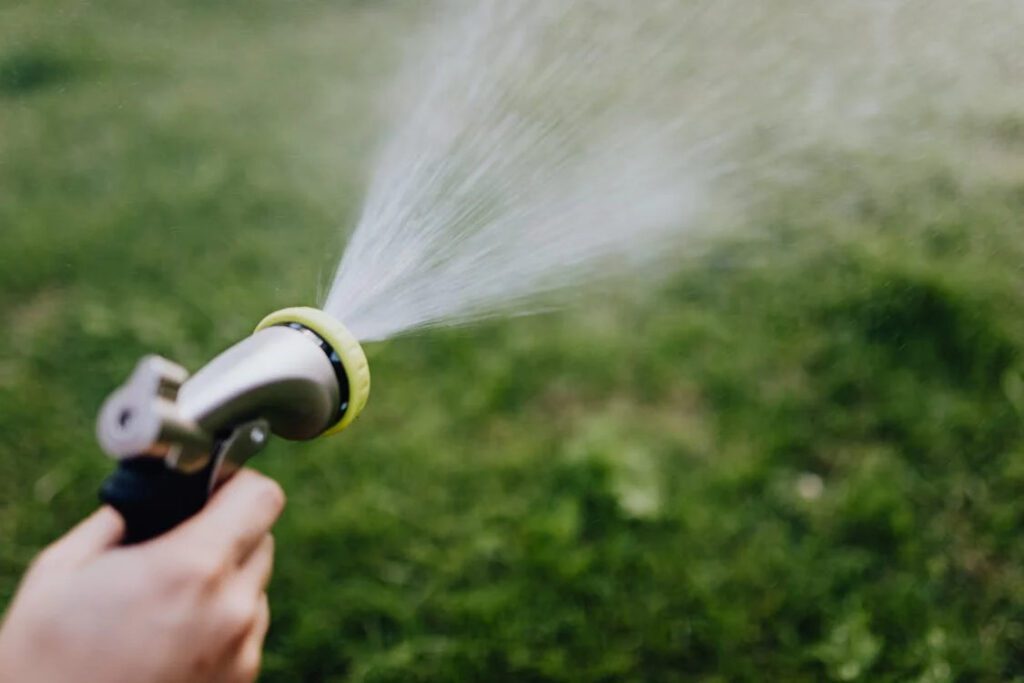
Soil Health and Fertility Management
To maintain a thriving lawn, conduct regular soil tests to assess nutrient levels. Aim for balanced fertilization: excess nitrogen can exacerbate disease problems. Aerating the soil will help to prevent compaction and manage thatch effectively.
Irrigation and Watering Techniques
Carry out a deep but infrequent watering strategy to promote strong root development. Diseases such as rust are more likely to develop from early spring through mid summer, so it is important to monitor lawn conditions closely during these times. Optimal watering occurs early in the morning, enabling your lawn to dry during the day and helping to reduce moisture-related diseases. Prolonged leaf wetness—such as more than 10 hours a day over several days—can promote the development of fungal diseases however so don’t over do it.
Choosing the Right Grass Type for Your Lawn
Select grass varieties that are well-suited for both Georgia’s climate and your specific soil conditions. Varieties like Bermuda, Zoysia, and Tall Fescue are excellent choices, demonstrating impressive disease resistance while thriving in local environments. When establishing or overseeding your lawn, avoid using infected plants to reduce the risk of introducing diseases.
Conclusion
Managing lawn diseases in Georgia requires a proactive approach backed by understanding and best practices. By focusing on soil health, adhering to solid irrigation techniques, and selecting the right grass type, you can minimize the chance of diseases like Brown Patch and Dollar Spot taking hold. Remember, timely intervention and careful monitoring are key to maintaining a lush, resilient lawn that can withstand Georgia’s heat and humidity.
What are the most common lawn diseases in Georgia?
The most common lawn diseases in Georgia include Brown Patch, Dollar Spot, Fusarium Blight, and Gray Leaf Spot. These diseases thrive in the state’s humid subtropical climate.
How can I identify Brown Patch disease in my lawn?
Brown Patch disease appears as circular patches of brown grass, especially during hot summers when temperatures exceed 80°F. High humidity worsens its symptoms.
What treatment options are available for Dollar Spot disease?
To treat Dollar Spot, ensure balanced nitrogen fertilization, water deeply but infrequently, and aerate the lawn. Fungicides like propiconazole may also be used if necessary.
How frequently should I aerate my lawn to prevent diseases?
Aerating your lawn at least once a year can help prevent compaction and manage thatch effectively. This practice promotes healthier grass and reduces the likelihood of diseases.
What are effective lawn care practices to combat Fusarium Blight?
Although details on Fusarium Blight are limited, maintaining good lawn care practices like avoiding over-fertilization and proper mowing heights can help mitigate the risk.
What type of grass is best suited for Georgia’s climate?
Bermuda, Zoysia, and Tall Fescue are ideal grass types for Georgia, offering disease resistance while thriving in the local humid subtropical climate.

